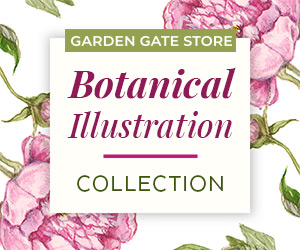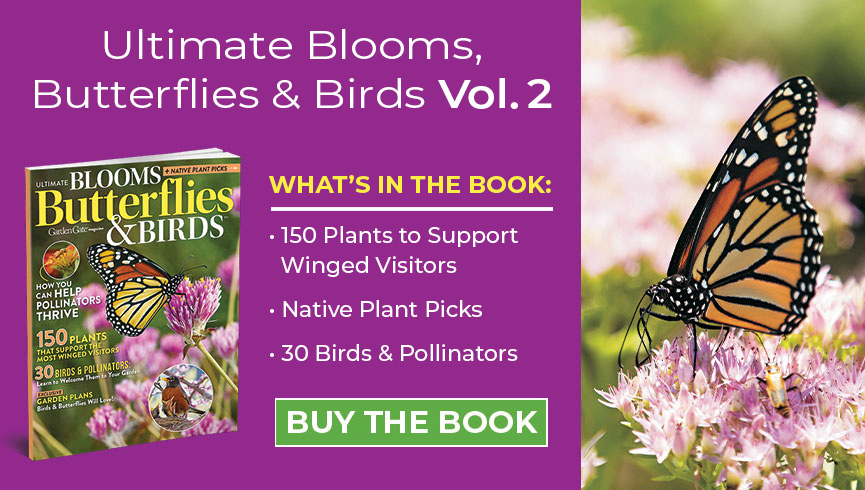
Bee balm
Monarda spp. and hybrids
Type Perennial
Blooms Red, purple, pink or white flowers from midsummer to early fall
Light Full sun to part shade
Soil Moist, well drained
Pests Powdery mildew
Size 8 to 48 in. tall, 8 to 36 in. wide
Cold hardy USDA zones 3 to 9
Grow bee balm in your garden
The vibrant blooms and aromatic foliage of bee balm add a splash of color and scent across perennial gardens from early summer to fall. In addition, deer and rabbits won’t eat it, butterflies, hummingbirds and bees love its flowers, and this North American native can easily adapt to various soil and climate conditions.
Unique whorls of shaggy-headed flowers are typically 2 to 3 inches wide and bloom for up to 6 weeks. Blooms burst forth in a spectacular array of red, purple, pink or white. The foliage blends the scents of mint and basil and is as functional as it is fragrant.

Bee balm is a multipurpose plant
Bee balm is more than just visually enchanting: It also offers medicinal and edible benefits. Native Americans have long recognized its antiseptic properties, using it as a remedy for digestive issues, headaches and infections. The leaves can be used fresh or dried for teas and are believed to alleviate symptoms of colds, fevers and sore throats. Additionally, bee balm flowers are a bit spicy with a minty, oregano-like flavor and add a subtle zest to salads, as a garnish or in baked goods.
Now let’s explore the different bee balm cultivars, how to care for them and the secrets to cultivating a garden with its beauty and aromatic allure.

Tips for growing bee balm
For the most flowers and healthiest plants, grow bee balm in a spot with full sun. Although plants will do just fine in part shade, they might not form as many flowers there. However, in the Southeast or Southwest, bee balm can perform better if you plant it in a spot with afternoon shade.
How to plant bee balm
Some of the older varieties, such as ‘Blue Stocking’ or ‘Jacob Cline’, in the photo above, can spread rapidly. When you plant them, be sure to set the crowns as far apart as the expected mature width so they don’t overcrowd themselves in just a year or two. Many of the newer hybrid series, such as Leading Lady, are clumpers rather than spreaders, so they shouldn’t outgrow their allotted space.
Consistent moisture is key
When you plant, choose a spot with consistently moist soil — most bee balms won’t thrive in dry conditions. Plants will drop leaves and not flower as well. If you don’t want to water all summer, try spotted bee balm or wild bergamot (or their hybrids, such as ‘Peter’s Purple’), which don’t require as much moisture.
You Might Also Like:
How to Plant Perennials in Four Simple Steps
Edible Flowers
10 Long-Blooming Perennials
Seasonal maintenance for bee balm
After the flowers are spent in mid- to late summer, deadhead stems back to just above a healthy set of leaves to tidy them up. Stems will die back and plants will go dormant in fall. You can wait until spring to cut back the dead foliage. However, if powdery mildew was a problem in summer, you should cut them back in fall to prevent spores from this fungal disease from hanging around and infecting next year’s plants. Toss diseased foliage in the garbage rather than your compost pile. Check out “Preventing Powdery Mildew” below to learn more.

Divide bee balm to get more plants
Many bee balms spread by rhizomes, or underground stems. In the right conditions, plants may die out in the center if they become overcrowded. And as they spread, they can encroach on nearby plants. Dividing in spring or fall every few years can help rejuvenate crowded clumps and keep spreaders in check.
How to divide bee balm
To do this, dig up the entire patch and break it into chunks with a few healthy stems each. Or you can simply slice the edges off the expanding clump. Share the extra divisions with friends or tuck them into other spots in your own garden. Fertilize plants once a year in early spring with a general-purpose granular or liquid slow-release fertilizer or apply compost or manure.

How to prevent powdery mildew on bee balm
Although it won’t likely kill a plant, powdery mildew is unsightly and causes distorted leaves, premature leaf drop and fewer flowers. Its white spots quickly spread to cover the entire plant in summer and fall. In addition to choosing resistant cultivars, here are a few ways to help prevent or control an outbreak.
- Limit drought stress — Your best bet is to grow plants in moist soil, but if you have to prevent, try to do so at ground level to keep moisture from resting on the leaves.
- Avoid overcrowding — Divide clumps every few years if the centers begin to die out.
- Remove infected plants and leaves — Cut off diseased stems as soon as you see symptoms, and in fall, cut back infected plants. Dispose of them in the garbage, not the compost pile.
You Might Also Like:
How to Divide 45 Favorite Perennials
7 Common Garden Diseases
5 Home Remedies for Fungal Diseases in the Garden

Designing with bee balm in the garden
Finding a spot in the garden where you can grow bee balm is easy! Here are a few ways you can show off this summer beauty.

Create bold borders with bee balm
Bee balm’s vibrant, showy flowers make it a striking garden plant. And with a variety of sizes available, it’s versatile too. Taller varieties, such as 32-inch-tall ‘Red Velvet’ or 3- to 4-foot-tall ‘Jacob Cline’ make great backdrops and middle-of-the-bed companions. Colorful dwarf varieties, such as ‘Leading Lady Plum’, ‘Petite Delight’ or ‘Pardon My Purple’ in the photo above, draw your eye along the front of a border or along a path.

Mix flower shapes
To get a border that is visually appealing, pair bee balm with other perennials with contrasting colors, shapes and textures. Spiky salvia, flat-topped yarrow, round globe thistles... so many ways to create colorful summer perennial combos alongside bee balm’s unique blooms.

Attract pollinators with bee balm
Bee balm is a magnet for bees, butterflies and hummingbirds, thanks to its colorful, highly scented blooms. Hummingbirds tend to pollinate the hybrids with larger flowers, such as ‘Gardenview Scarlet’ or ‘Red Velvet’, while bees and other insects favor the smaller flowers of the other species, such as wild bergamot or spotted bee balm. Pair bee balms with other native plants, such as purple coneflower, yarrow, switchgrass or the black-eyed Susan in the photo above to get a garden the pollinators will buzz about.
Bee balm is deer- and rabbit-resistant!
Not only does bee balm attract pollinators, but deer and rabbits won’t eat it. If you struggle with these pests, it’s a good choice in a bed with other deer-resistant plants, such as lavender or salvia.
For gardeners seeking a versatile plant that fills summer gardens with bold blooms, scents, and pollinator activity, bee balm is a no-brainer! Grow it in the right conditions and it’ll be the plant that keeps on giving.
You Might Also Like:
6 Plants Bees Love
Attract More Hummingbirds with this Garden Plan
11 Deer & Rabbit Resistant Plants
Meet the bee balm family
Although there are several native species of bee balm in North America, many of the varieties you’ll find at the garden center are either cultivars of common bee balm (Monarda didyma), which produces scarlet-red flowers, or they’re hybrids between common bee balm and wild bergamot (M. fistulosa), which features light lavender to pale pink blooms. Crosses between the two provide flower colors in shades of red, purple and pink and plants of various sizes and growing habits.
Breeding for powdery mildew resistance
Breeders have also been working hard to develop varieties that are resistant to powdery mildew, a fungal disease that often affects the foliage of older varieties. Let’s take a look at several great powdery mildew-resistant options — it may be hard to choose just one for your garden!























